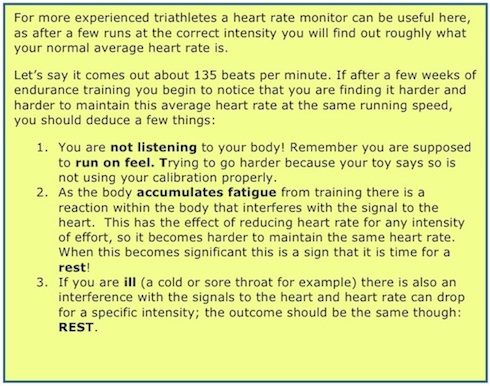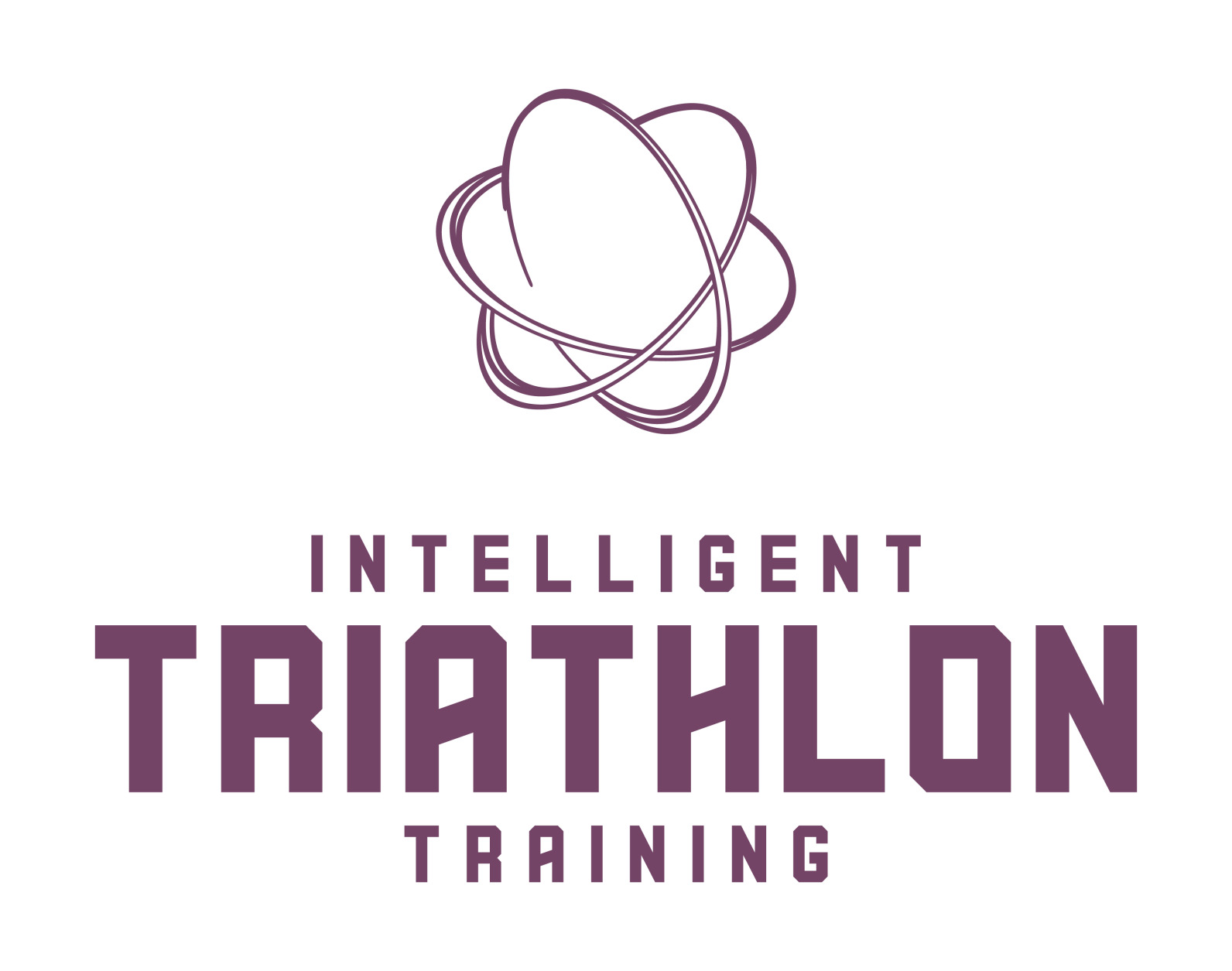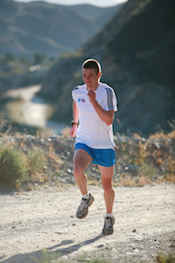How To Improve Your Triathlon Run Endurance
Training, May 07, 2021
Improving your triathlon run endurance should be your aim whether you are a beginner triathlete or a more experienced one.
The actual training is very similar for both beginner triathletes and more advanced triathletes.
The main difference is that for more advanced triathletes (those who have been training for a couple of years or so) the runs are longer.
Also, we begin to include the use of various ‘toys’ in the training, such as heart rate monitors.

If you have read the Why Include Endurance Run Training page you will remember we use three types of endurance training:
- Extensive Endurance (EE) This is the long easy miles, where breathing is comfortable and it takes a while to feel fatigued. If you know your Lactate Threshold 1 pace, then it is always below this intensity.
- Intermediate Endurance (INE)This can be described as uncomfortably comfortable. It’s not hard, yet it’s not easy. In many running circles this is called TEMPO. If you know Lactate Threshold 1 & 2 intensities then it is roughly mid way between the two
- Intensive Endurance (IE)This is your hard endurance; it is definitely not comfortable. This is around Lactate Threshold 2 intensity.
You should also remember that the main effect of endurance training (at any intensity) is improved fatigue resistance and the ability to run for longer at the same pace.
The reasons this is useful to a triathlete are:
1. To enable you to do more and better quality Speed Training, which will make you go faster.
2. To enable you to run as close to your single discipline (run on its own) best time as possible.
If you have any questions about your triathlon running training then please just ask us.
How Do I Know If I’m Running At The Right Intensity?
One of the key things to do is to calibrate yourself. Never mind the electronic toys that tell you heart rate, speed and so on. Those should support your triathlon run training not dictate it. To be truly effective in your training you need to be calibrated. You need to know what the training should feel like, this then enables you to determine whether you are running far enough or too far.

Heart rate can be misleading for a number of reasons.
However it can be useful to monitor over time, on repeated runs for example. If your triathlon run training is being effective you will see a lower heart rate for similar speeds.
This is because your training increases the strength and size of your heart, and makes changes to the composition of your blood. With a larger, stronger heart and greater blood volume you require less heartbeats to transport the oxygen in your blood to your muscles for a particular speed.
You will not see this week on week, but you will see it over months, and it should help to reassure you that you are making the progress you expected to.
The section below outlines how you should feel during each of the endurance training types. Read through them and think back to some recent runs and try to categorise those.
Extensive Endurance
This is the lowest intensity endurance triathlon run training and these sessions should be at a comfortable, controlled pace. This is absolutely key.
Whilst conversation is not always easy in running due to the synchronisation between your stride rate and your breathing, you should find that if you stopped, within a few seconds your breathing rate would be controlled and you could chat easily.
As the session goes on you should feel the same but your legs begin to feel less fresh, and then a bit tired (it can sneak up on you; one minute you are fine then 5 minutes later your legs don’t quite respond the way you intended). This is a sign that you are starting to challenge your Extensive Endurance capacity.

Everyone, no matter how good will reach this point. How well endurance-trained you are will dictate how long it is before you begin to feel this. The crucial part is that the intensity is correct. In a beginner triathlete or runner this may occur after 15 to 20 minutes. Someone better trained may run at the same speed and the same initial effort level but take 45 minutes or more to reach the same point of fatigue. Your endurance capacity is unique to you!
You may also find that the feeling is different on different days.After a few days of rest you may run for 60 minutes before you begin to tire, however a couple of weeks later after some more swim, bike, run training you may find you tire at 40 minutes on the same route. This is because of the accumulated fatigue from the other training. Until you rest, this is your new endurance capacity. And you must respect it!
This feeling of fatigue is one of the key indicators for you. If you never get this feeling you are not going for long enough. If however you are running at the correct intensity but every run leaves your legs cramped and completely drained, you are running for too long.

Intermediate Endurance
This should feel like what is best described as uncomfortably comfortable. Breathing is noticeably deeper and more frequent and conversation is not really very easy. Duration is dependant upon your training status, but can be anything from about 20 minutes in a beginner triathlete or runner, up to 90 minutes in an well trained person.
In many running circles this would be called a Tempo run.
The idea is that after a warm up, you build up to this intensity and hold this for the duration required. There should be no real let off, which means maintaining effort on the ups AND the downs on the route. Often this part is forgotten and people push a little harder on the ups and then relax on the downs.
It is crucial to keep the intensity consistent as you are trying to develop both muscular and cardiovascular endurance. To do this you need to keep both systems under a constant load. If you relax or ease off before building up again, you allow those systems a moment of recovery. Interval, Fartlek and SPEED training uses this principle, but it has no place in Intermediate Endurance sessions.
With this in mind choice of route can be crucial to successfully performing this session. Choosing a route with lots of road crossings, steep ups and downs or poor surfaces means you will struggle to complete the session effectively.

One of the key effects of this triathlon run session is to help you to run fast on the downhills, which is often over looked in programmes. Many people lack the leg speed and control to be able to effectively run downhill, but there are significant time gains to be made for those who can!
This is one of our key sessions for building towards race day, as it consolidates the SPEED and ENDURANCE you should have been developing, and really helps to build fatigue resistance into your running. This enables you to have a better run off the bike.
In running circles this is often used in the early season, but in triathlon we reverse this deliberately. The sessions might be the same or similar but the purposes within the sports are different. You as a triathlete want to run well having swum and cycled.
Intensive Endurance
This is HARD! No two ways about it. As a rough guide to time, it is from 20 minutes (untrained beginner triathlete) to about 45 minutes (well trained elite).

Simply put it is hard endurance. No talking, breathing on the ragged edge and deep! It hurts and you don’t want to do too much of it, as the muscle soreness and damage associated with this pace is hard to recover from.
This type of triathlon run training is mentally and physically tough and we usually recommend using competitions such as cross-country and 5 or 10-km road races as a way of getting the best sessions. For beginners you should not do too many of these races.
The main purpose is to build specific endurance at an intensity above your triathlon run race intensity - or to put it another way if you are more experienced and have a good idea of your physiology, above your LT2. This then helps to build a foundation of quality endurance that can be used when you do SPEED training.

Read our page on how to build a training plan for whatever distance you are aiming for.
Summary of Endurance Training
There are three levels of endurance training, that each train a specific part of your endurance profile. They have slightly different benefits for your triathlon run but all revolve around improving the duration you can sustain a particular intensity for, rather than specifically trying to make you go faster.
Extensive Endurance - Builds your foundation to enable better quality performance enhancing training, you become more fatigue resistant.
Feels: Comfortable, breathing under control, can talk easily.
Duration: As long as it takes to begin to feel tired. For a beginner triathlete usually anything from 20 minutes to 90 minutes.
When to train: All year round, but significantly more in the off-season.
Intermediate Endurance - Builds fatigue resistance to a specific intensity that is moderately hard, enabling better quality speed training and significantly improved triathlon running performance in longer endurance races.
Feels: Uncomfortably comfortable. Have to concentrate a little more, aware of breathing.
Duration: 15 - 90 minutes.
When to train: Build up to main competitions from ~ 6 – 8-weeks out. Can be used throughout the season to maintain triathlon run endurance.
Intensive Endurance – Builds hard intensity fatigue resistance, that has a positive effect upon your SPEED training later in the season.
Feels: Very uncomfortable, requires a lot of concentration to maintain the intensity.
Duration: 15 – 40 minutes.
When to train: During the winter (cross country races) in conjunction with Extensive Endurance, and in the pre-season (road races) before beginning more SPEED training.

